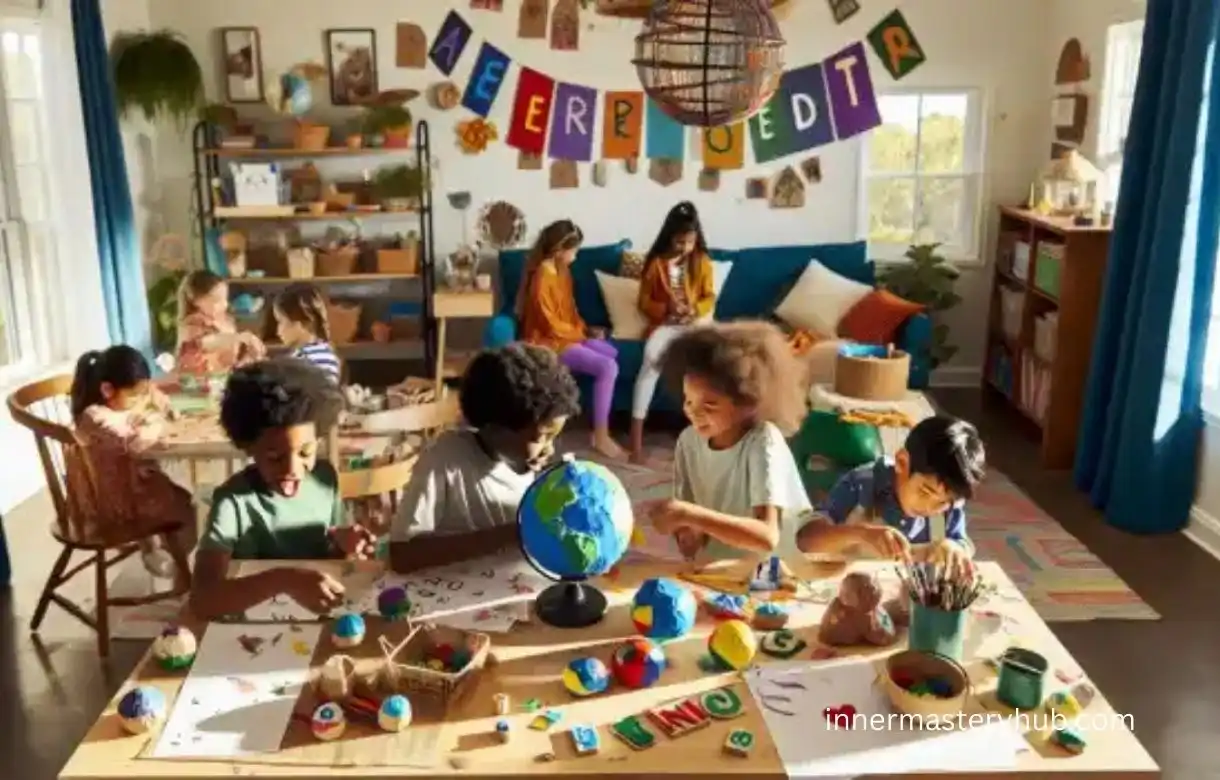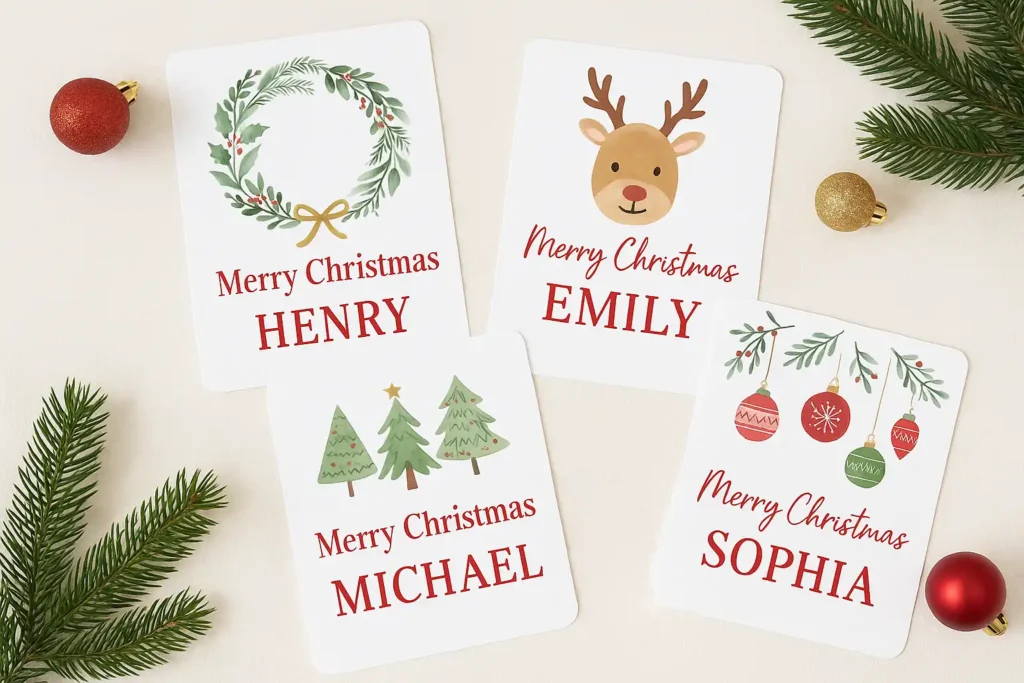DIY Educational Crafts to Enhance Learning at Home

Did you know that your child’s at-home learning can be significantly improved by doing easy DIY educational crafts? You can easily combine creativity with fundamental disciplines like math and physics by implementing practical exercises. This method not only keeps your child interested but also helps them build abilities that are invaluable to their growth.
As you experiment with different craft concepts and supplies, you may find creative ways to turn commonplace objects into useful teaching tools. Are you unclear of where to begin? Let’s look at some simple strategies that can turn your house into a lively classroom.
Benefits of DIY Educational Crafts
DIY educational crafts offer a wealth of benefits that can increase both learning and creativity. To get busy in hands-on activities, you’re not just keeping your kids occupied; you’re actively improving their cognitive and motor skills.
These projects often blend various subjects, such as math, science, and art, allowing your children to learn in a fun and interactive way. When you create something together, you’re also building critical thinking and problem-solving skills.
Kids learn to follow instructions, measure materials, and adjust their designs based on what works and what doesn’t. This trial-and-error process encourages resilience and adaptability, essential traits in today’s fast-paced world.
Moreover, DIY educational crafts can improve focus and concentration. As your child gets busy with a project, they’re practicing patience and perseverance. You’ll find that these skills translate to other areas of their life, including schoolwork.
Crafting With Recycled Materials
In addition to sparking creativity, crafting with recycled materials teaches essential knowledge about sustainability and resourcefulness. Commonplace objects, such as plastic bottles, cardboard boxes, and old magazines, can be transformed into interesting educational projects.
To begin, collect items from your house; this will inspire you to consider what can be reused. Think about using magazine cuts to create a vibrant collage. Children have the chance to express themselves artistically while refining their fine motor abilities through this practice. Turn empty toilet paper rolls into binoculars or animals if you have any. You may spread storytelling and imaginative play with just a little paint and your creativity.
Another fun project is building a bird feeder from a milk carton. Cut holes, decorate it, and hang it outside. This not only gives creativity but also teaches kids about nature and responsibility.
Science Experiments at Home
You can carry out intriguing science projects that spark curiosity and develop a love of learning in the convenience of your own home. These practical exercises might be easy and call for things you probably already own.
Try the traditional vinegar and baking soda volcano, for instance. In a container, combine equal amounts of baking soda and vinegar, then watch as a fizzing motion emerges. Kids may learn about chemical reactions in a fun way with this experiment!
The creation of DIY recycled crafts, like a lava lamp, is another fantastic project. Pour some vegetable oil into a transparent bottle after adding a few drops of food coloring. Observe the appealing effect of the oil floating on top. The interesting findings allow you to talk about density and invisibility.
Try building a basic circuit with a battery, wires, and a tiny lightbulb if you’re searching for something a little more complex. This practical method helps children understand fundamental electrical concepts.
Doing science experiments at home develops critical thinking in addition to providing entertainment. So get your supplies together and go exploring! Additionally, these exercises can be a great addition to scheduled courses if you balance them with online school K–12.
Math Games With Everyday Items
Everyday objects can be transformed into entertaining math games that enhance the learning experience. Your child’s enthusiasm for math can be sparked with a bit of imagination and objects found around the house; you don’t need costly tools or resources.
To get you started, consider these interesting suggestions:
- Counting with Pasta. Use uncooked pasta to practice counting, addition, or even subtraction. Kids can create different groups or stacks to visualize numbers.
- Card Games. Grab a standard deck of cards to play games like War or Crazy Eights. Each game can involve adding or subtracting values, reinforcing math skills while having fun.
- Measuring with Kitchen Tools. Use measuring cups or spoons to explore fractions and measurements. You can cook together and discuss how different quantities relate to each other.
- Building with Blocks. Use building blocks to teach shapes, symmetry, and spatial reasoning. Challenge your child to build a structure with a certain number of blocks or specific shapes.
These simple games can transform your home into a math playground, making learning both engaging and effective!
Art Projects for Creative Thinking
Art projects can be a fantastic way to spark creative thinking in children. Engaging in hands-on activities allows them to explore their imagination and express themselves.
Start with simple projects like creating a collage. Gather magazines, scissors, and glue, and encourage your child to cut out images that resonate with them. This activity not only enhances their creativity but also develops fine motor skills.
Another great idea is painting with unconventional tools. Instead of brushes, try using sponges, feathers, or even their fingers. This approach encourages experimentation and helps them think creatively.
You might also introduce nature-inspired art. Collect leaves, flowers, and twigs, and challenge your child to create a masterpiece using these materials, fostering a connection with the environment.
Don’t forget about sculpture! Provide modeling clay or recycled materials and let your child build whatever they envision. This three-dimensional art form can foster unique ideas and develop problem-solving skills.
Language Learning Through Crafting
Children find language learning through crafting to be both enjoyable and successful. Your child’s vocabulary will grow, their grammar will get better, and their confidence will increase if you combine creativity with language instruction.
Here are some engaging crafting ideas to enhance language skills:
- Story Stones. Paint stones with pictures that stand in for various words or expressions. Your child’s vocabulary and storytelling abilities will grow as they use these stones to tell stories.
- Collage of words. Collect magazines and let your youngster cut out text or pictures that catch their attention. They can practice using descriptive language by making a collage and explaining their artwork.
- Creative flashcards. Create vocabulary word flashcards with cardstock. Make learning fun by beautifying it with stickers or sketches for visual reinforcement.
- Puppets of letters. Make puppets out of paper bags or socks. To let your child practice speaking in context, allow them to use new words in a little play.
These activities not only make language learning enjoyable but also build creativity and critical thinking.
DIY Seasonal Crafts for Learning
The opportunity to involve your child in learning through DIY seasonal crafts also changes with the seasons. Every season has its own themes that can improve everything from science to art.
Paper plates and paint can be used to make a flower life cycle project in the spring. This improves your child’s fine motor abilities while teaching them about botany.
Using blue construction paper and cutout sea creatures, create an entertaining underwater scene to discover ocean life during the summer. This can inspire their creativity while introducing children to marine life.
Think about creating a nature collage or leaf rubbings as fall draws near. This combines art and science by letting your child see and learn about various trees and their leaves.
Making paper snowflakes during the winter months is a great way to learn symmetry and geometry concepts.
These DIY educational crafts provide enjoyable and instructive hands-on learning opportunities. You may make learning engaging and relevant for your child by introducing seasonal themes.
Building a DIY Learning Station
Creating a DIY learning station can be a thrilling way to continue the hands-on learning you’ve introduced with DIY educational crafts. This dedicated space will help your child engage with educational materials in a structured yet fun environment. You can customize the station to cater to their interests and learning style, making it a personal hub for exploration.
To get started, consider these essential components for your learning station:
- Art Supplies. Stock up on paper, markers, crayons, and glue for creative projects.
- Books. Include a variety of age-appropriate books to encourage reading and storytelling.
- Learning Tools. Use puzzles, flashcards, or math manipulatives to reinforce and solidify your understanding of concepts.
- Writing Area. Create a designated spot with a desk or table for writing and drawing activities.
Did you know that your child’s at-home learning can be significantly improved? Rotate the materials every few weeks to keep things fresh and interesting.
This won’t only increase their learning experience but also instill a sense of ownership and responsibility. Your DIY learning station can become an essential part of their educational journey at home!
Incorporating Play Into Education
When play is brought into the classroom, education becomes a fun experience that helps children absorb new ideas and skills. Mixing educational activities with play helps your child’s cognitive development while keeping them entertained.
Introducing games that support their learning should be your first step. Try using board games that demand strategy or counting, for instance, if they are studying arithmetic. These exercises develop critical thinking in addition to making learning enjoyable.
Additionally, crafting can be a fun method to learn. Make do-it-yourself projects that are relevant to their coursework. Get supplies to create a little habitat if they are studying nature so that they can experience ideas firsthand.
Don’t forget about role-playing! You can create scenarios where your kids act out historical events or scientific processes, making the learning experience immersive.
Tips for Successful Crafting
Successful crafting is based on a few key strategies that can make the experience enjoyable and educational.
Whether you’re dealing with a simple project or something more complex, these tips will help you create a productive crafting environment.
- Gather Supplies. Before starting, make sure you have all the necessary materials on hand. This reduces interruptions and maintains momentum.
- Set Clear Goals. Define what you want to achieve with the craft. This provides a clear direction and helps guide you through the process.
- Encourage Creativity. Let your child express their ideas and add personal touches. This brings creativity and makes the project more meaningful.
- Reflect Together. After completing the craft, sit down together to discuss what you learned and enjoyed. This helps to focus on the educational aspect of the activity.
Conclusion
By bringing DIY educational crafts into your home, you can transform everyday items into valuable learning resources and turn learning into a fun journey. You’re doing more than just crafting when you help your child develop creativity and critical thinking skills; you’re creating a better future for them. So get your hands dirty, gather your repurposed things, and start having fun! Keep in mind that every masterpiece you produce together has the capacity to spark a lifelong passion for learning and reveal new abilities.
DIY Educational Crafts FAQS
What are easy DIY educational crafts for kindergarten kids?
When parents begin preparing for school, this is a popular search. Typical tasks include creating form collages with construction paper and glue or creating alphabet bottle sensory jars, which include filling clear bottles with colored rice and letter magnets. These support early reading and fine motor skills—materials: magnets, rice, and bottles.
How to make STEM crafts at home for kids?
Making a basic balloon-powered car out of cardboard, straws, and a balloon is a popular way to teach physics. Children study motion and the fundamentals of engineering—materials: tape and recyclables.
DIY science experiments that are crafts for children?
For the mountain, try making a volcano out of playdough that teaches chemical processes by combining vinegar and baking soda. To create bubbles, shape the dough around a bottle and add dish soap. A twist on education: Introduce volume by measuring eruptions—ingredients: vinegar, baking soda, and food coloring.
What are fun math crafts for elementary school?
Use chalk and beans to make number line hopscotch (count as you “hop”) or make fraction pizzas out of construction paper slices and paper plates. Playfully teaches fractions and counting—materials: markers and paper plates.
How to create DIY educational crafts & art projects for toddlers?
A favorite for early growth. Colors and textures can be taught by finger painting with textured materials like foil or yarn; create a sensory collage by applying shapes on paper. Helps with hand-eye coordination and creativity. Paint and recycling are the required materials.
DIY recycled crafts that teach environmental science?
Greener searches are becoming more popular. To talk about recycling and habitats, turn toilet paper rolls into a bird feeder by painting them, adding a string, and adding seeds. Children learn about ecosystems while observing visiting birds—supplies: Birdseed, peanut butter, and rolls.
What are quick DIY educational crafts for kids during the holidays?
Seasonal peaks, such as holidays or the start of classes. A jar of appreciation for teachers: Use markers to decorate a mason jar and write down “what I learned.” This teaches writing and introspection—supplies: paper slips and a jar.
How to make DIY sensory crafts for learning disabilities?
The goal of inclusive searches is tactile learning. A rice bin helps phonics and sensory processing with hidden letters, where foam letters are buried in dyed rice for a digging exercise. Adjust for different demands. Materials: letters, bin, and rice. Twenty minutes.
Best DIY history or geography crafts for school projects?
Timeline DIY educational crafts are among the searches for older children. Using colored strips, make a paper chain chronology of historical events, with each link representing a year or fact. Teaches chronology with visual aids—materials: markers and paper.
What supplies do I need for beginner DIY educational crafts?
Inquiries with a tight budget. Basics: safe scissors, cardboard or egg cartons for recycling, markers, glue sticks, and construction paper. Start with free ideas, such as learning geography by creating maps out of everyday objects. The majority of initiatives cost less than $10.
How to make DIY educational crafts for kids at home?
Try a recycled bottle ecosystem terrarium: Clean an empty plastic bottle, add layers of soil, small plants or moss, toy animals, and water to simulate a habitat. Kids learn about ecosystems and biology while building. Supplies: Bottle, soil, gravel, stickers. Time: 20 minutes. Educational twist: Discuss food chains.
DIY recycled crafts that teach environmental science?
Eco-friendly projects are hot. Turn cardboard tubes into windmills: Cut and glue tubes/fins to a base, attach to a straw “axle,” and blow to spin. Supplies: Toilet paper tubes, straws, and tape. Time: 25 minutes. Demonstrates renewable energy and recycling.
What are DIY educational crafts for preschoolers?
A frequent search for age-appropriate projects. Try color sorting jars: Decorate clear jars (or plastic cups) with colored paper, then have kids sort pom-poms or buttons by color into the jars. Supplies: Jars/cups, colored paper, pom-poms. Time: 15 minutes. Teaches color recognition and fine motor skills.
DIY educational crafts for learning numbers?
Common for early math skills. Make number match wheels: Cut a paper plate into a circle, divide it into sections, write numbers 1-10, and clip clothespins with matching dots or numerals. Supplies: Paper plate, clothespins, markers. Time: 20 minutes. Reinforces number recognition and counting.
DIY educational crafts for history lessons?
Niche but growing for school projects. Build mini timeline scrolls: Roll a strip of paper, tape ends to straws, and write/draw historical events (e.g., dinosaurs to modern day). Supplies: Paper, straws, markers. Time: 25 minutes.
How to create DIY educational crafts for reading?
High demand for literacy activities. Make story stones: Paint small rocks with characters or objects (e.g., tree, dog), then use them to create oral stories. Supplies: Rocks, paint, and a brush. Time: 20 minutes (plus drying).
DIY educational crafts for geography?
Create a DIY continent puzzle: Draw a world map on cardboard, cut into continent shapes, and have kids reassemble while naming them. Supplies: Cardboard, markers, scissors. Time: 30 minutes. Teaches continents and spatial skills.






